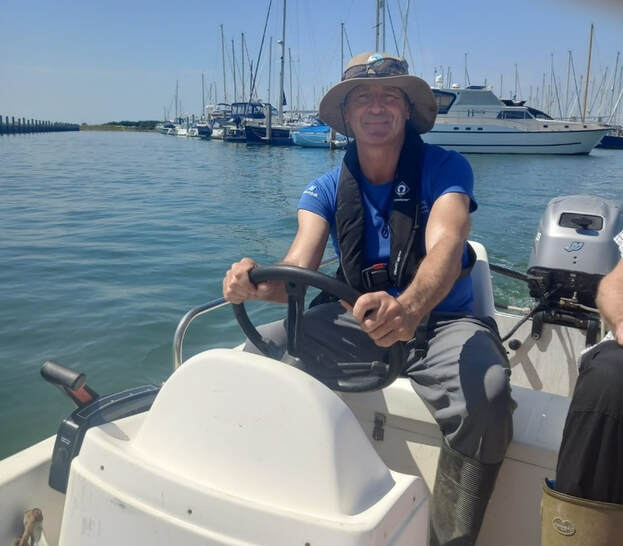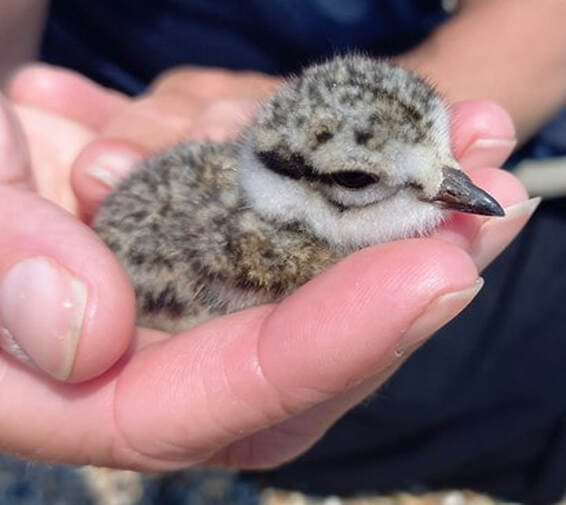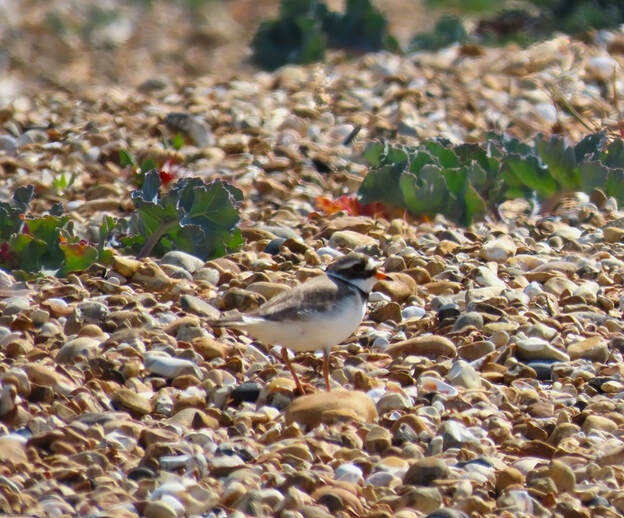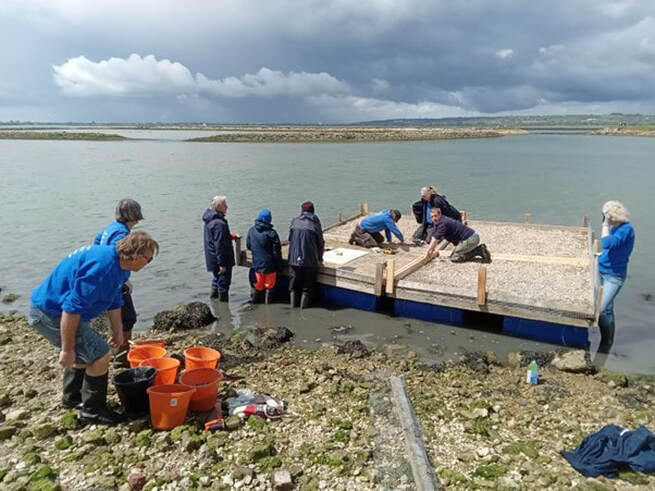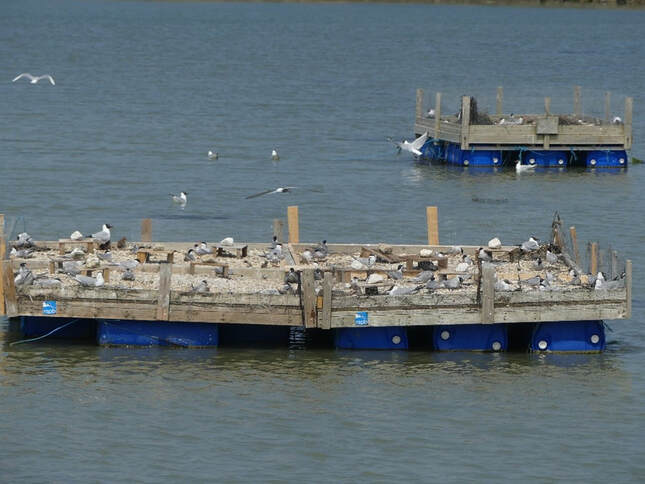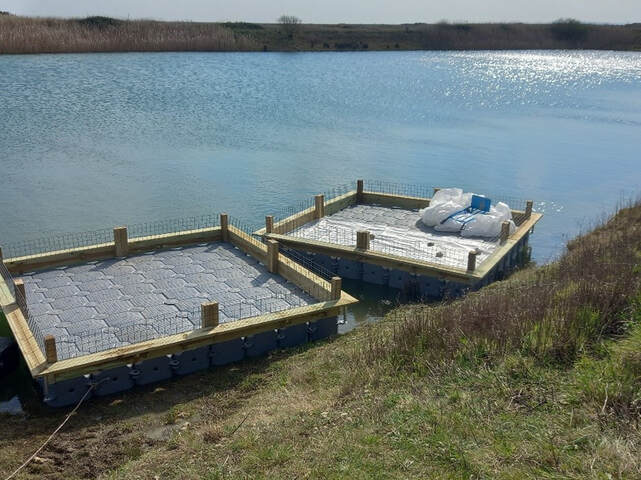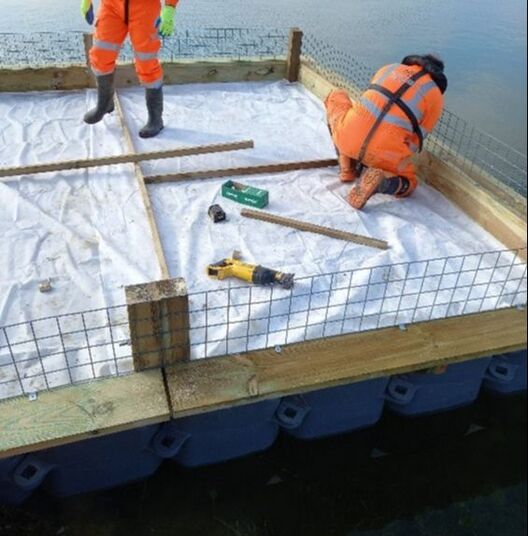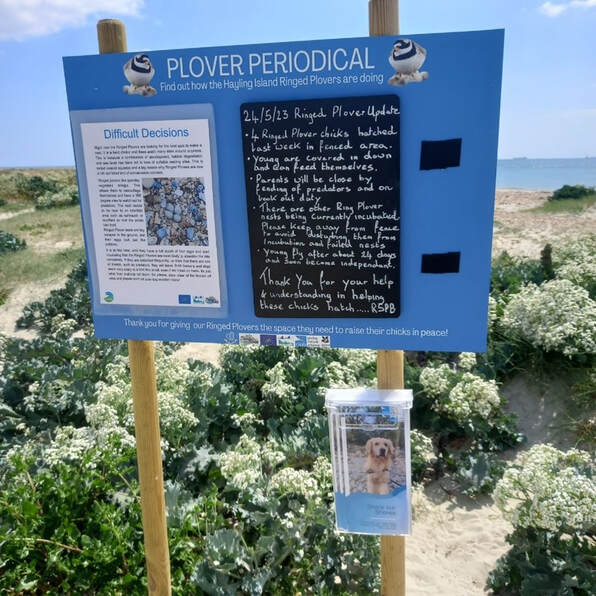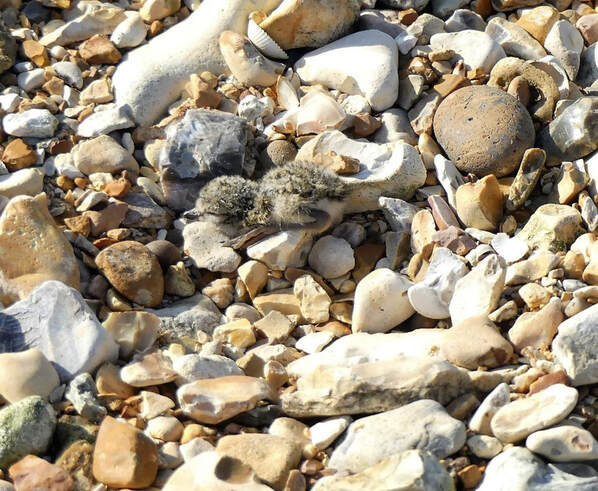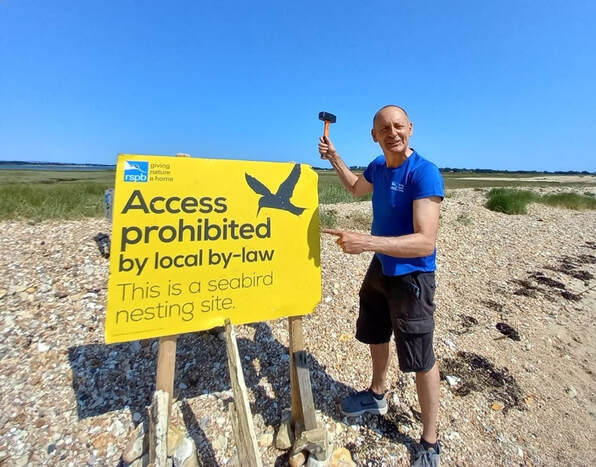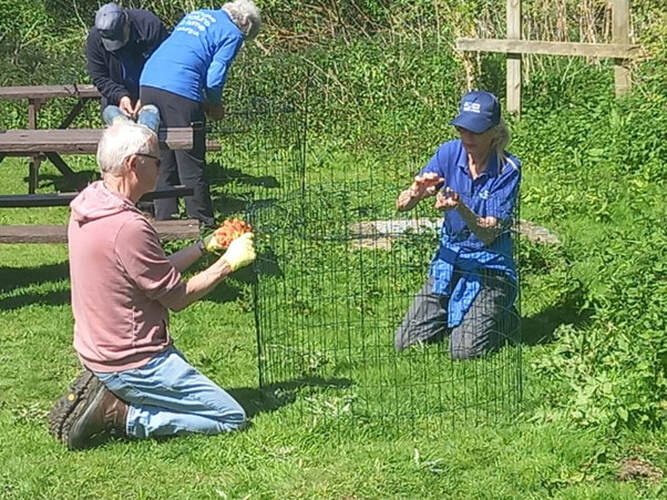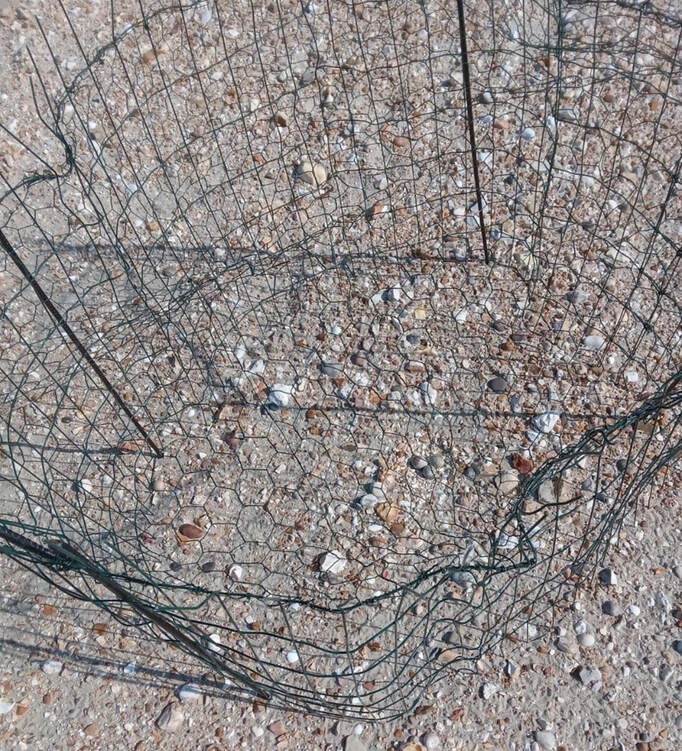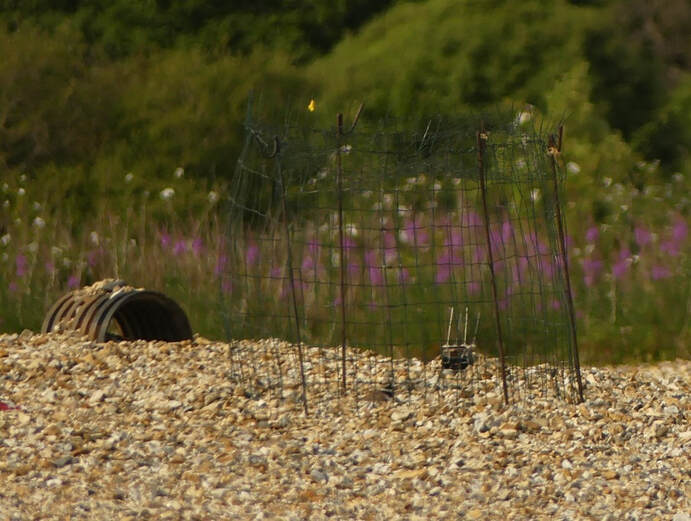|
Hello, my name is Mark Appleton and work as Beach Nesting Bird Project Officer along the Solent. I joined the RSPB in this role, this March 2023. So, what does a Beach Nesting Bird Project Officer do? I will attempt to explain some of the tasks I have undertaken so far. Thanks to the LIFE Programme (LIFE on the Edge) and the Solent Seascape Project, I was recruited to help change the fortunes of shore nesting birds on multiple sites, both on and off natures reserves across the Solent. This even includes working at the Browndown Military Training site. The area of Solent that I am responsible for ranges from Hurst Spit on the Western Solent to Pagham harbour on the Eastern Solent. Spread out across the Solent’s shingle and saltmarsh coasts, a diverse range of coastal ground-nesting birds make their home each summer. Ringed Plover, Oystercatcher and Little Tern regularly attempt nesting on our shingle beaches looking for new sites each year to raise a new generation as well as returning to old favourites. At the time of writing, we are in the very busy period where all our beach nesting birds are beginning to hatch, and a lot of my time is spent monitoring and trying to protect them Dense colonies of Sandwich Tern, Black-headed gull and Mediterranean Gulls take advantage of the water surrounded shingle and saltmarsh islands whilst common tern use a mixture of sites varying from man made structures to secluded shores. All these species are facing the growing challenge of fitting in on our very busy coasts. That’s where we are aiming to make a difference. I have been involved in the creation and deployment of these manmade structures, rafts for the common terns, working both with the RSPB Pagham wardens and volunteers to implement. Another part of the role is to develop, empower and support teams of volunteers to deliver shore nesting bird protection. Both the RSPB Pagham volunteers and RSPB Gunner point volunteers have been essential in providing support. Without them a lot of the jobs would not get done. At Hayling Island Gunner point this year we have continued developing the Ringed Plover Project that was set up by local conservationist Trevor Codlin. With the help of volunteers, we have cordoned off a section of the beach with mesh fencing to give Ringed Plover space to nest and bring up their chicks free from human and dog disturbance. The volunteers helped to install the fencing and regularly patrol the area to educate, raise awareness and inform visitors about how we can help Ringed Plover here by giving them lots of space and keeping away from fenced off areas so they can incubate their eggs without nest failures. I have created a Whatsapp group for the project so we can all provide each other updates on patrols and monitoring results. At the time of writing, we have had 3 successful nests with a total of 8 chicks with 2 very close to fledging. Unfortunately, our Ringed Plovers cant read and one family regularly wonders outside the fence. Only this week a dog was seen chasing the family and was only saved by the adult male luring the dog away by flying along the beach with the dog in close pursuit. This is why our brilliant volunteers are so important in raising awareness. To support our volunteer rangers I have created signage, a periodical update board and leaflets to inform the public. Deploying and creating signage is a very important part of the role as areas of prime nesting area need protecting Monitoring of breeding Ringed Plovers has identified that predation is one of the main factors in preventing hatching success. High levels of predation are likely to be exacerbated due to loss of good quality habitat, rising sea levels, and increasing human disturbance which could be resulting in birds nesting in sub optimal conditions and closer together. This year I have been part of the RSPB scientific study to test the effectiveness of nest cages on the hatching success of beach-nesting Ringed Plovers. So far the results are very encouraging and trail camera footage has shown protection from foxes, carrion crows, dogs, kestrel and even a tawny owl. An important part of the role is to continue building partnerships across a broad range of organizations so that we collaborate and achieve optimum success in trying to help nature. I try to provide updates and communication between organizations to achieve this and collaboration has include RSPB Pagham, Natural England at North Solent Nature Reserve, Hampshire Countryside Service at Lymington and Keyhaven Nature Reserve and Hook with Warsash , Browndown Military Training camp and many amazing volunteers. I hope this gives a flavour of some of the tasks involved with the role. If I had to summarise the role I would say: -
Buckler’s Hard Website: https://www.bucklershard.co.uk/events/conservation-awareness-day/ Facebook: https://fb.me/e/3h8QvEutw
Happy summer holidays but please remember to look out for our beach nesting birds and give them lots of space with dogs under close control 😊 Thank you for reading Mark
3 Comments
Simon Butler
23/6/2023 22:16:22
Sounds great Mark!
Reply
Tony Tiller
24/6/2023 14:19:59
Well done Mark and team, as Mr Tesco says every little helps.
Reply
MAPHILLIPS
28/6/2023 22:11:58
Great work and informative article. This covers the three legged stool guide to conservation. Habitat, food source and protection from predation/disturbance.
Reply
Leave a Reply. |
Archives
April 2024
Categories
All
Photo credits: Oystercatcher by Katie Nethercoat (rspb-images.com)
LOTE Logo credits: Saskia Wischnewski |

